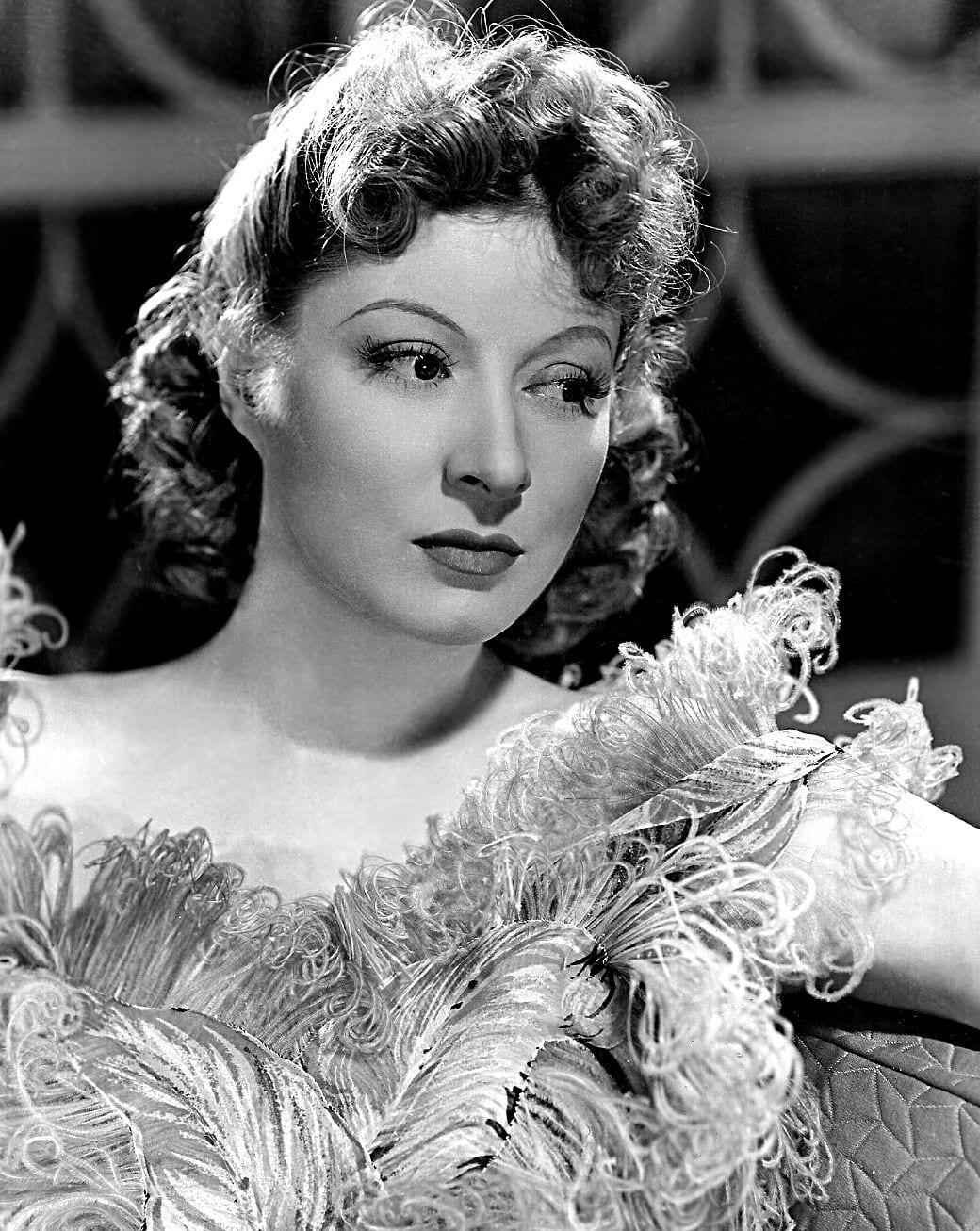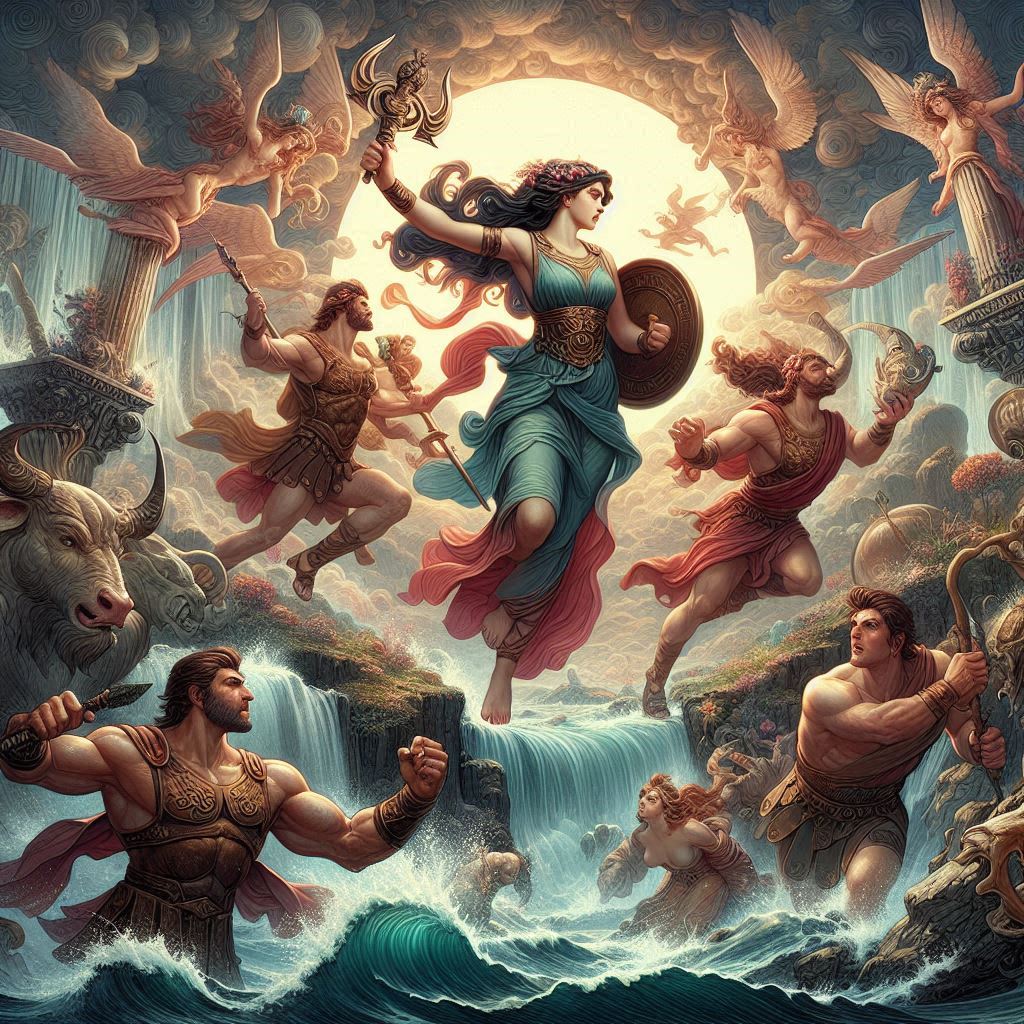Greer Garson (1904-1996) was a British-American actress known for her elegant performances in classic Hollywood films. She gained prominence in the 1940s, earning seven Academy Award nominations and winning the Best Actress Oscar for her role in “Mrs. Miniver” (1942). Garson’s career spanned several decades, and she remains celebrated for her talent and contributions to the golden age of cinema.
Born Eileen Evelyn Greer Garson, she was the only child of George Garson, a commercial clerk, and Nina Garson, a homemaker. Raised in a middle-class family, young Greer initially showed an interest in the arts and literature. She attended King’s College London, where she studied French and literature, and later earned a degree in 1927.
Greer’s journey into acting began somewhat serendipitously. While attending a play in London, she impulsively auditioned for the acting school at the Birmingham Repertory Theatre and was accepted. This marked the start of her formal training in acting, and she quickly developed her skills on the stage.
In the early 1930s, Greer Garson made her stage debut in various British productions, honing her craft and gaining recognition for her talent. Her breakthrough came with the play “Golden Arrow,” where she caught the attention of Louis B. Mayer, a prominent Hollywood producer. Mayer, impressed by Garson’s performance, offered her a contract with Metro-Goldwyn-Mayer (MGM).
Garson’s transition to Hollywood marked the beginning of a remarkable film career. She made her American film debut in “Goodbye, Mr. Chips” (1939), a romantic drama directed by Sam Wood. In the film, Garson played opposite Robert Donat, and her portrayal of Katherine Bridges earned her the first of seven Academy Award nominations for Best Actress.
However, it was her role as Mrs. Miniver in the wartime drama “Mrs. Miniver” (1942) that catapulted Garson to international stardom. Directed by William Wyler, the film depicted the struggles of a British family during World War II. Garson’s heartfelt performance resonated with audiences, and she received widespread acclaim for her portrayal of strength and resilience. “Mrs. Miniver” went on to win six Academy Awards, including Best Picture, and Garson herself won the Oscar for Best Actress.
Greer Garson’s success in “Mrs. Miniver” established her as a leading actress, and she continued to receive critical acclaim for subsequent roles. In “Random Harvest” (1942), she starred alongside Ronald Colman in a romantic drama that explored themes of memory and identity. The film showcased Garson’s ability to convey emotional depth and earned her another Academy Award nomination.
Her on-screen partnership with Walter Pidgeon became iconic, and the two co-starred in several successful films. In “Mrs. Parkington” (1944), Garson played the titular character in a drama spanning several decades. Her performance as a woman reflecting on her life earned her yet another Academy Award nomination.
During the 1940s, Garson’s career reached new heights with a string of successful films. In “Madame Curie” (1943), she portrayed the pioneering scientist Marie Curie alongside Walter Pidgeon. Her ability to capture the essence of historical figures added to her reputation as a versatile actress. The film received critical acclaim and garnered several Academy Award nominations.
“Mrs. Parkington” (1944) and “The Valley of Decision” (1945) further solidified Garson’s status as a beloved leading lady. Her poise, elegance, and ability to connect with audiences made her a sought-after actress in Hollywood. In 1946, she received her fourth Academy Award nomination for her role in “The Valley of Decision.”
While her early success came primarily from dramatic roles, Greer Garson showcased her versatility by venturing into lighter fare. In the romantic comedy “Adventure” (1945), she starred opposite Clark Gable in a story set against the backdrop of the Canadian wilderness. The film demonstrated Garson’s ability to excel in various genres.
As the 1940s progressed, Garson’s films continued to captivate audiences. In “The Miniver Story” (1950), a sequel to “Mrs. Miniver,” she reprised her role as Kay Miniver, navigating post-war challenges. While the film did not achieve the same level of critical acclaim as its predecessor, Garson’s performance remained a highlight.
In 1951, Greer Garson took on the challenging role of Eleanor Roosevelt in “Sunrise at Campobello.” The film depicted the early years of Franklin D. Roosevelt’s presidency and explored the impact of his battle with polio. Garson’s portrayal of the compassionate and strong-willed First Lady earned her another Academy Award nomination.
The mid-1950s saw Garson’s career evolve as she took on roles in various genres. In “Julius Caesar” (1953), she played Calpurnia in Joseph L. Mankiewicz’s adaptation of Shakespeare’s classic play. Her ability to transition seamlessly between classical and contemporary roles showcased her versatility.
Despite her success in dramatic roles, Greer Garson’s career experienced a decline in the late 1950s. Changes in the film industry, evolving audience tastes, and a shift in the types of stories being told contributed to a shift in her career trajectory. Garson made fewer films, but she continued to work in television and occasionally returned to the stage.
In the 1960s, Garson’s focus shifted toward television, where she found success with projects like “The Eleanor Roosevelt Story” (1965) and “A Christmas Memory” (1966). Her work on the small screen earned her critical acclaim, demonstrating her adaptability to different mediums.
Garson’s contributions to the entertainment industry were recognized with various honors. In 1960, she received a star on the Hollywood Walk of Fame for her achievements in motion pictures. Additionally, she received the Jean Hersholt Humanitarian Award at the 1978 Academy Awards in recognition of her charitable efforts.
As Greer Garson entered the later years of her career, she continued to work sporadically in film, television, and theater. Her last film role was in “The Singing Nun” (1966), a biographical drama in which she played Mother Prioress. Garson’s enduring appeal and commitment to her craft were evident in her ability to connect with audiences across different generations.
In her personal life, Greer Garson experienced both triumphs and challenges. She was married three times, with her first two marriages ending in divorce. In 1949, she married millionaire Texas oilman E.E. “Buddy” Fogelson, and the couple remained together until Garson’s passing.
Greer Garson’s contributions to the film industry were substantial, and her legacy endures through her memorable performances. Her ability to convey a range of emotions, from strength to vulnerability, made her a relatable and beloved actress. The grace and elegance she brought to her roles, combined with her talent for capturing the complexities of human experiences, left an indelible mark on Hollywood’s Golden Age.
Greer Garson passed away on April 6, 1996, in Dallas, Texas, at the age of 91. While her career experienced shifts over the years, her impact on the film industry and her place as a beloved actress have remained enduring. Greer Garson’s influence reached beyond the silver screen, and her legacy continues to be celebrated by those who appreciate the artistry and dedication she brought to her craft.
In reflecting on Greer Garson’s career, it’s essential to recognize her commitment to storytelling and her ability to portray a wide range of characters with depth and authenticity. From her early success in “Goodbye, Mr. Chips” to the iconic “Mrs. Miniver” and beyond, Garson left an indelible mark on classic Hollywood cinema.
As audiences look back on the Golden Age of Hollywood, Greer Garson’s contributions stand as a testament to the power of storytelling and the enduring impact of a talented actress. Her ability to navigate between genres, capture the essence of historical figures, and convey the complexities of human emotions solidifies her place in the pantheon of Hollywood legends.
While the film industry has evolved since Greer Garson’s heyday, her legacy lives on through the timeless nature of her performances. Her work remains a source of inspiration for aspiring actors and a reminder of the artistry that defines great cinema. Greer Garson’s grace, talent, and dedication to her craft continue to resonate with audiences, ensuring that her name remains synonymous with the golden era of Hollywood.
In celebrating the life and career of Greer Garson, one recognizes not only her artistic contributions but also the impact she had on shaping the narrative of cinema during a pivotal period. As Hollywood continues to evolve, Greer Garson’s legacy remains a beacon, reminding us of the enduring power of storytelling and the timeless allure of a truly gifted actress.










